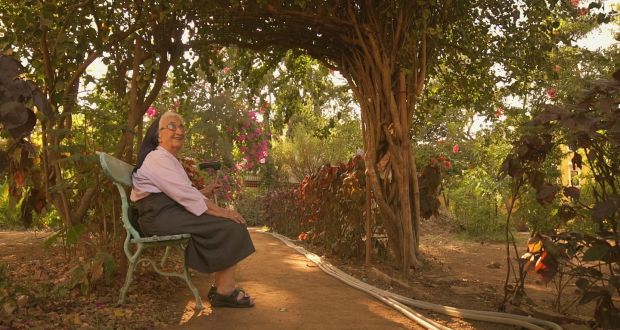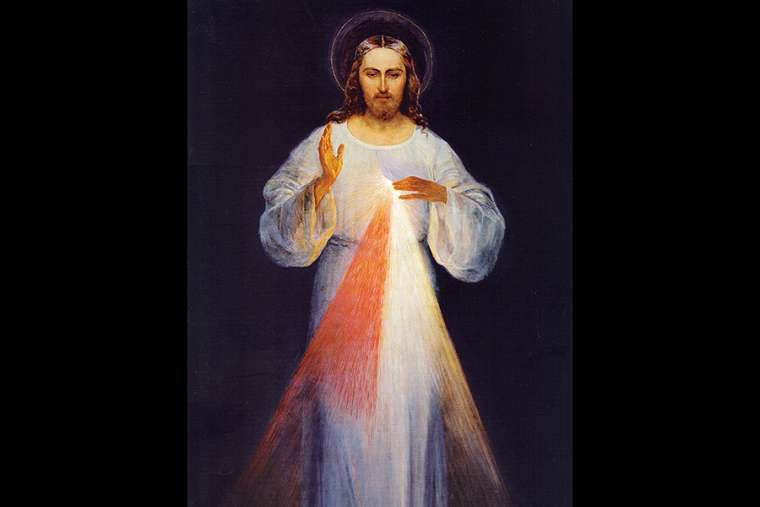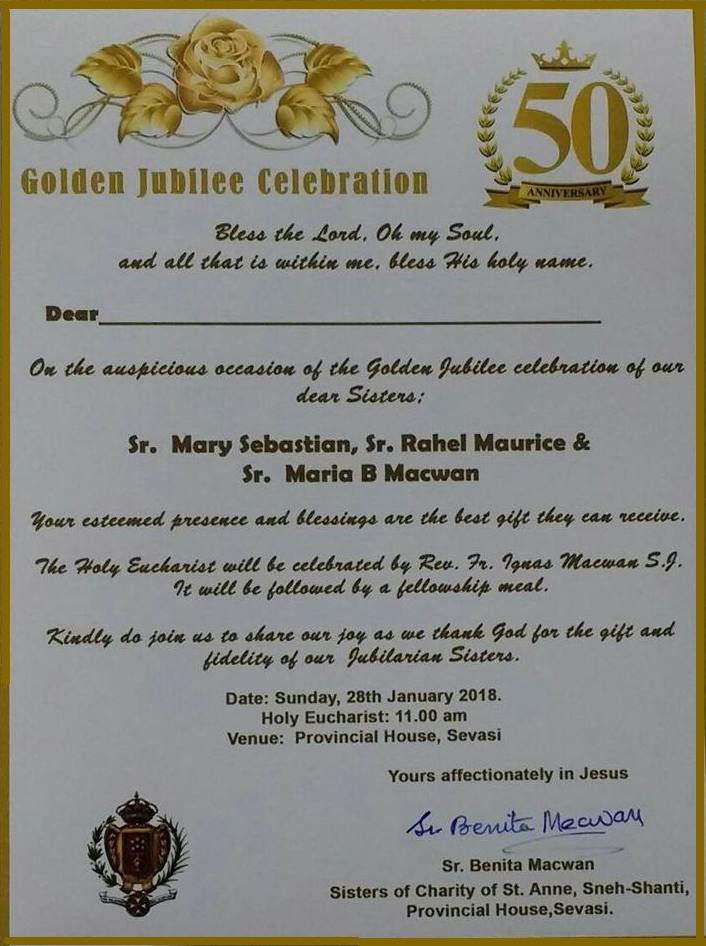Celebrating the Irish nun educating children in India for 70 years

Sr Loreto is renowned in Chennai for her humour, and brown bread baked in a tandoor oven
Áine Edwards – Tue, Mar 6, 2018, 16:39

Áine Edwards – Tue, Mar 6, 2018, 16:39

 Vilnius, Lithuania, Apr 6, 2018 / 03:03 am (CNA/EWTN News).- This article was originally published on CNA Nov. 26, 2017.
Vilnius, Lithuania, Apr 6, 2018 / 03:03 am (CNA/EWTN News).- This article was originally published on CNA Nov. 26, 2017. By Hannah Brockhaus
By Hannah Brockhaus


Continue reading Golden jubilee of religious life of Sr. Mary, Sr. Rahel and Sr. Maria celebrated on Sunday, January 28, 2018 at Provincial House-Sevasi.
ગુડફ્રાઈડે બાદ પ્રથમ આવતા રવિવારને ખ્રિસ્તી બિરાદરો ઈસ્ટર ડેતરીકે ઉજવે છે.ચરોતરના આણંદ-ખેડા જીલ્લાના ચર્ચોમાં ઈસુ ખ્રિસ્તનાપુનરુત્થાનને વધાવી સજીવન થયેલા ઈશુ ખ્રિસ્તના માનમાં ઈસ્ટર સસન્ડેની ઉજવણી કરવામાં આવી હતી.ખ્રિસ્તી પરિવારો ચર્ચમાં ભેગા થઈ સામૂહિક પ્રાર્થના કરીને એકમેકને”હેપ્પી ઈસ્ટર”ની શુભેચ્છા પાઠવી હતી.
આણંદ,નડિયાદ,ખંભાત,ઉમરેઠ,કપડવંજ,ખંભોળજ,ડાકોર,આંકલાવ,બોરસદ,ઠાસરા,મહુધા,માતર,તારાપુર સહિતના ચર્ચોમાં ઇસ્ટર માટે ખ્રિસ્તી બિરાદરોમાં ભારે ઉત્સાહ જોવા મળ્યો હતો.
શનિવાર રાત્રે ૧૨.૦૦ કલાકે ઈસુના પુનરુત્થાનને વધાવી પ્રાર્થના સભા યોજાઈ હતી. ચરોતરના ચર્ચોમાં પુનરુત્થાનની ઘટનાને અનેક ચર્ચોમાં આબેહુબ રજુ કરાઈ હતી.
નડિયાદ સ્થિત ક્રાઈષ્ટ ધ કિંગ ચર્ચ ખાતે ધ્વની વૃંદ દ્વારા ઈશુના પુનરુત્થાનની જીવંત ઝાંખી કરાવતા દ્રશ્યો ઉભા કરાયા હતા.આ અંગે અજય વાઘેલાએ જણાવ્યું હતું કે-ગુડ ફ્રાઈડેના દિવસે ઈસુ ખ્રિસ્તને ક્રોસ પર ચડાવી દેવાની ઘટનાથી ખ્રિસ્તી બિરાદરોની આંખો ભીંજાઈ હતી. જ્યારે ઈસ્ટર ડે ના દિવસે ઈસુ ખ્રિસ્ત પુન: સજીવન થયા હોઈ આ દિવસ આનંદથી ઉજવવામાં આવે છે.
આ અંગે ફાધર જોસેફાતજણવ્યા મુજબ-‘ઈસ્ટર’ એટલે પ્રભુ ઈસુને ગુડ ફ્રાઈડેના પર્વે શૂળી પર ચડાવી દેવાયા બાદ ત્રીજે દિવસ પછી રવિવારે પ્રભુ ઈસુના પુનરાગમન થવાના ચમત્કારને ‘ઈસ્ટર સન્ડે’ તરીકે ઉજવવામાં આવે છે.ગુડ ફ્રાઇડેના દિવસે ઇસુને ક્રોસે જડી દેવાયા હતા. ત્યારબાદ ત્રીજા દિવસે એટલે કે રવિવારે તેઓ ફરીથી સજીવન થઇને આવે છે. તેથી અનુયાયીઓ રવિવારને ઇસ્ટર સન્ડે તરીકે મનાવે છે. ઇસુએ કહેલું કે જીવન અને પુર્નજીવન હું છું. મારા જે વિશ્વાસ રાખે ક્યારેય મરતો નથી.
દરેક શહેરમા ચર્ચમાં ઇસ્ટર સન્ડેને ઉજવણીની કરવામાં આવી હતી.શનિવાર રાત્રે મીણબતી લઈને ખ્રિસ્તી પરિવારોએ ચર્ચમાં પ્રવેશ કરી પ્રાર્થના કરી હતી.ઈસુના આગમનને વધાવવા રાત્રીના સમયે દરેક ચર્ચોમાં ખ્રિસ્તી પરિવાર મીણબત્તી લઈને આવ્યા હતા.રવિવારે ઈસ્ટર પર્વની ઉજવણી કરવામાં આવી હતી. ચરોતરના વિવિધ ગામ, શહેરોમાં ચર્ચોમાં મધ્યરાત્રિથી જ ઉજવણીનો પ્રારંભ થયો હતો. સાથે સાથે સવારે ખ્રિસ્તી સમુદાય દ્વારા સામૂહિક પ્રાર્થના કરવામાં આવી હતી અને એકમેકને ઇસ્ટર પર્વની શુભેચ્છા પાઠવવામાં આવી હતી.આ ઉજવણી બાદ દરેક પરિવારોના ઘરે પવિત્ર પાણીનો છંટકાવ કરી ધર્મગુરુ આશીર્વાદ આપશે.
– શ્રી. શૈલેશ રાઠોડ.
Holy Week 2018 messages from Diocese of Ahmedabad, Gujarat. Published by Gurjarvani.
Palm Sunday 2018 – Message by Fr. Ashok Vadhela S.J.
Holy Thursday 2018 – Message by Fr. Vinayak Jadav S.J.
Good Friday 2018 – Message by Archbishop Thomas Macwan
Holy Saturday 2018 – Message by Fr. Ashok Vadhela S.J
Easter 2018 – Message by Fr. James B. Dabhi S.J.